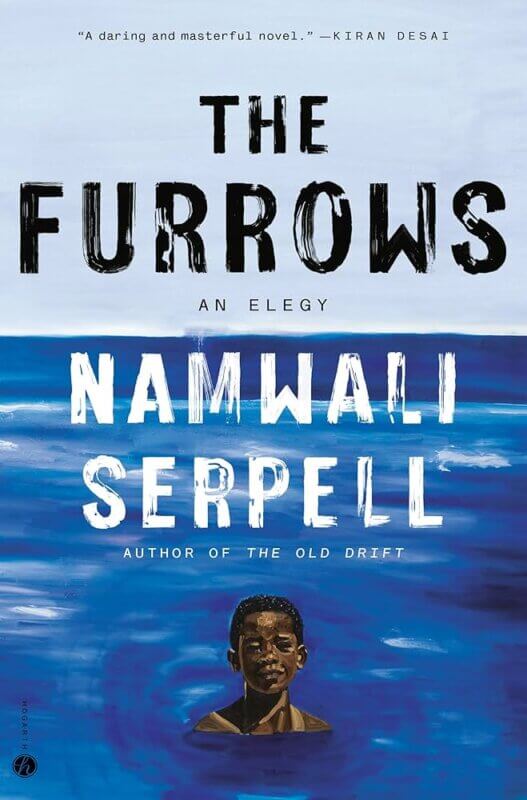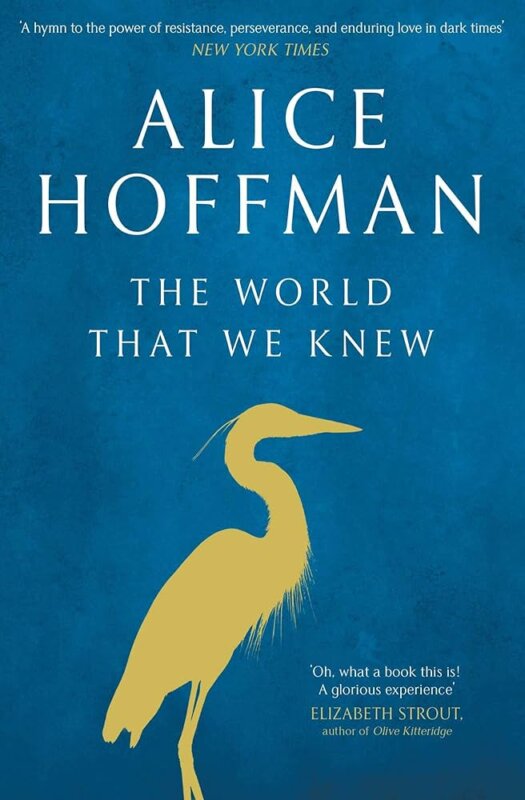Unheimlich and de gustibus non disputandum est
It’s a funny thing about books, how sometimes we love them and sometimes we don’t. Sometimes I will love a book, but another person will not love it at all. I saw all this play out on my recent vacation, when I read a book I thought was spectacular, but when my daughter’s friend Laura found herself bookless, I lent it to her. She began it, but in a day or two admitted it just wasn’t doing it for her.
It made sense, in a way. The book is a little confusing. But the writing is gorgeous and the plot unusual and compelling, or so I thought. For me, any issues of confusion faded like footprints in sand in relation to the poetry, creativity and psychic truth of the novel.
In the end, Laura left my paperback copy of the novel on a small table in the living room. I saw it there on my way to the beach. Let’s hope she found something more suitable at the airport.

Anyway, I’m not sure where I picked up “The Furrows” by Namwali Serpell, but I remember noticing that it was one of Obama’s favorite books, as well as a finalist for the National Book Critics Circle Award, one of the New York Times’ ten best books of the year and longlisted for the Joyce Carol Oates Prize. New York Magazine dubbed it “a triumph. “Brilliantly inventive and enthralling,” said Oprah Daily. One of the best books of the year, said The New Yorker, Time, The Washington Post, Los Angeles Times, The Guardian, Esquire and Ms. Magazine.
“I don’t want to tell you what happened. I want to tell you how it felt,” the book begins.
What happens, or what seems to happen, is 12-year-old Cassandra Williams goes to the beach with her brother, Wayne, age 7, who, while swimming, disappears. But what actually happened? Did he drown? Is he dead? Where did his body go? The reader, as well as a number of characters in the novel, imagines that he must be deceased, as many details point to that conclusion. Yet, as the novel progresses, it becomes less and less clear what really went down with Wayne. Cassandra did her best to rescue him, but then lost consciousness herself. She remembers coming to on the beach and seeing him, in a heap, washed ashore on the sand. Then, there was this mysterious man (was he real?) standing over the boy’s body. In short, no one really knows exactly what happened to Wayne. Cassandra feels guilty and responsible, and then her father leaves to start another family, and her mother, endlessly hopeful that her son is alive and growing up out there in the world somewhere, starts an organization whose mission is to find missing children.
Cassandra starts seeing her brother everywhere. Airplane aisles, stores, subway cars, sidewalks. But is it really him? Later in her life, she meets a man who is a stranger, yet who is also eerily familiar to her. His name? You guessed it: Wayne.
Which brings me to this concept I learned about decades ago: unheimlich. Unheimlich was first described by German psychiatrist Ernst Jentsch, who said that E.T.A Hoffmann’s “The Sandman” was a prime example of the uncanny in literature. Sigmund Freud, in 1919, elaborated on this idea in an essay, “Das Unheimliche,” in which he spoke of two concurrent meanings of the word: “Both courses lead to the same result: the uncanny is that class of the frightening which leads back to what is known of old and long familiar.” Unheimlich can be used to describe something that is both known and at the same time unknown — familiar, and yet unfamiliar.
I believe this word popped up in my consciousness because there is something unheimlich (I may not be using the word correctly in a sentence, but oh well) for Cassandra about this adult Wayne — and I would argue that there is something unheimlich about the novel itself, which goes on to tell other iterations of the day Wayne disappeared, leading the reader to be not only unsure of what really happened to the kid but also how, where and why the disappearance took place. I’m thinking this is probably where Laura threw in the towel.
A rather practical person by nature, the uncertainty regarding the course of events and the dreaminess or unreliability of the narrator are likely what caused her to abandon ship and quietly leave the book behind. But not me. Though I was a bit thrown off by the alternate descriptions of the day and way young Wayne went missing and found myself more confused, pages later, by this weird explosion that happens in an airport and the sudden switch to a new narrator and a whole new lens and perspective. The writing is excellent, and the exploration of grief, guilt, longing, love, memory and the passage of time is profound.
Apparently, this novel was inspired by the death of the author’s sister, who two decades ago died of a drug overdose. “What I took from that experience,” Serpell said, “had to do with the grieving process — my refusal to accept her death psychologically and this sense of seeing her everywhere.”
But getting back to books that some love and others don’t. After finishing “The Furrows,” I picked up a book that I confess I really didn’t love. I stuck with it and forced myself to finish it, but it was like eating unsalted porridge or walking on the beach when the sand is super wet and deep (I did some of that, as well). It just didn’t grab me, ever.
I was confused by the different characters and their complicated names, and though the book was decently written and based on a topic I would typically be all over, it was a slog. After finishing it, I left it, just as Laura left “The Furrows,” coverless and somewhat the worse for wear, on a guest room bureau. It is entirely possible that someone has found it and is loving it as we speak. What is the saying, “De gustibus non disputandum est”? Translation: There’s no disputing about taste.

Moving along, I am now reading Alice Hoffman’s “The World That We Knew.” It’s just the right antidote for the aforementioned slog (which I will not name lest I prejudice you against what is probably a perfectly good book) and which kept me occupied and engaged on the long plane trek home. There is a very special quality to Hoffman’s work that I can’t quite put my finger on, but the word “magical” is what comes to mind. Published in 2019, this novel has this quality, though its focus is not one where magic is typically found.
It takes place in Germany and France in the early 40s and highlights three main characters: (1) Lea, a young girl whose mother sends her away to save her from the Nazis; (2) Ettie, the quick-witted daughter of a rabbi from whom she secretly learns how to create a golem, which she does, in the “person” of (3) Ava, whose creation Lea’s mother commissions with her last few pieces of jewelry in order to protect Lea in her flight to safety. “What’s a golem?” you ask? You will have to read this book to find out (or you could just Google it), but I will tell you that this one, Ava, is a highly unusual golem, in that she has more human traits than your typical golem, and even falls in love, with a heron. See what I’m talking about? Magic. And yet also grounded in something very real: a world at war; the violent extermination of thousands of women, men and children, the separation of so many families. It is about some of the ones who fled, and some of the ones who helped.
One of the quotations in the front of the book strikes me as so poignant and illuminating, for this novel, and for our time. From Exodus 23:9: “The strangers in your midst shall be to you as the native-born, for you know the stranger’s heart, for you were strangers in the land of Egypt.”

